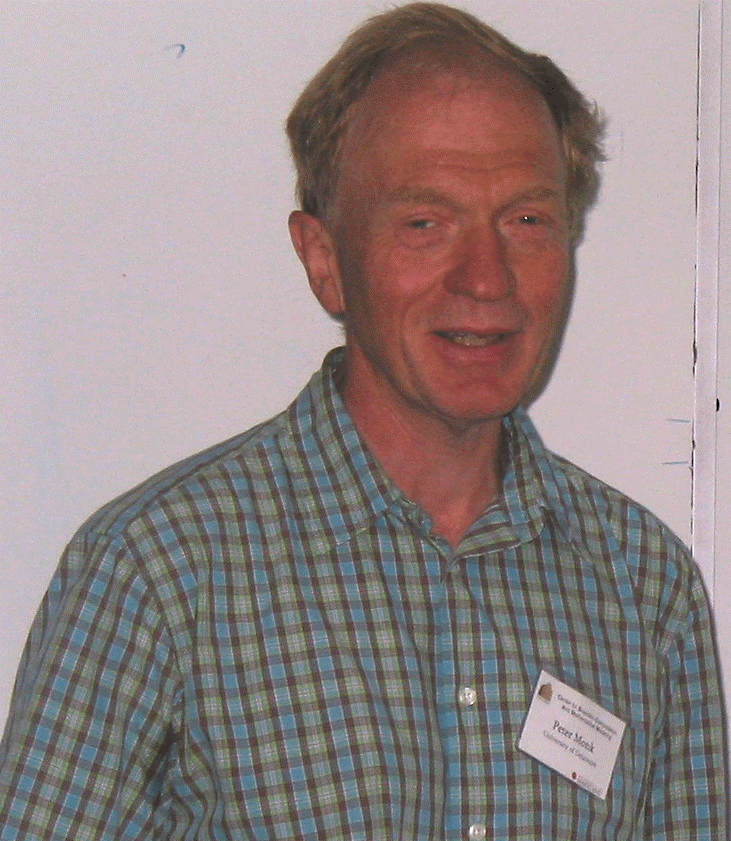Research Activities > Programs >
High Frequency Wave Propagation 2005
>
Peter Monk
|
|

CSIC Building (#406),
Seminar Room 4122.
Directions: home.cscamm.umd.edu/directions
|
 The Numerical Solution of Time-Harmonic Acoustic and Electromagnetic Scattering Problems by the Ultra Weak Variational Formulation The Numerical Solution of Time-Harmonic Acoustic and Electromagnetic Scattering Problems by the Ultra Weak Variational Formulation
Peter Monk
Mathematical Sciences at University of Delaware
|
|
Abstract: When
electromagnetic or acoustic waves impinge on an
object, they are scattered by reflection, refraction
and other mechanisms depending on the shape and
properties of the scatterer. We wish to compute the
scattered field resulting from the interaction of an
object (the scatterer) and a known incident field.
Although such problems are usually linear and
well-posed they are difficult to solve numerically
because the oscillatory nature of the solution
forces the use of large numbers of degrees of
freedom in the numerical method, and the resulting
linear system defies standard approaches such as
multigrid. This is a particular problem at high
frequencies when the scatterer spans many
wavelengths. In an effort to improve the efficiency
of a volume based approach as the frequency
increases and to allow the solution of problems at
widely different frequencies on a single grid, we
have investigated the use of plane waves as a basis
for approximating the scattered field. These are
used in a discontinuous Galerkin scheme based on a
tetrahedral finite element mesh. This method is
termed the Ultra Weak Variational Formulation (UWVF)
by its originators O. Cessenat and B. Despres. In
joint work with Tomi Huttunen (Finland) and Eric
Darrigrand (France) we have developed the UWVF by
addressing certain conditioning problems that may
arise if the plane waves are not chosen carefully.
We have also shown how to use the Perfectly Matched
Layer or Fast Multipole Method to improve the
artificial boundary condition needed by the method.
Interestingly the linear system from the UWVF is
easier to solve than the one arising from the finite
element method, and this allows a simple parallel
implementation of the method. The method has been
validated on a variety of problems, and extended to
the acoustic-elastic fluid-structures problem. In
the talk I shall show how the UWVF may be derived as
a flux splitting discontinuous Galerkin method. I
shall then show numerical and analytic results that
demonstrate both the successes and drawbacks of the
method applied to both ultrasonic simulations and
also to electromagnetic scattering problems.
[LECTURE SLIDES]
|
|
|
